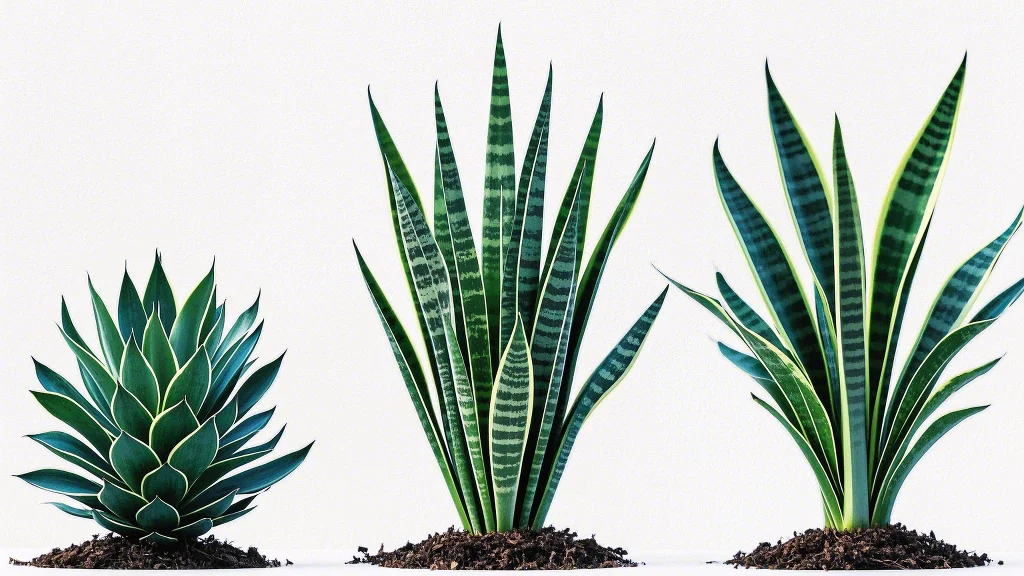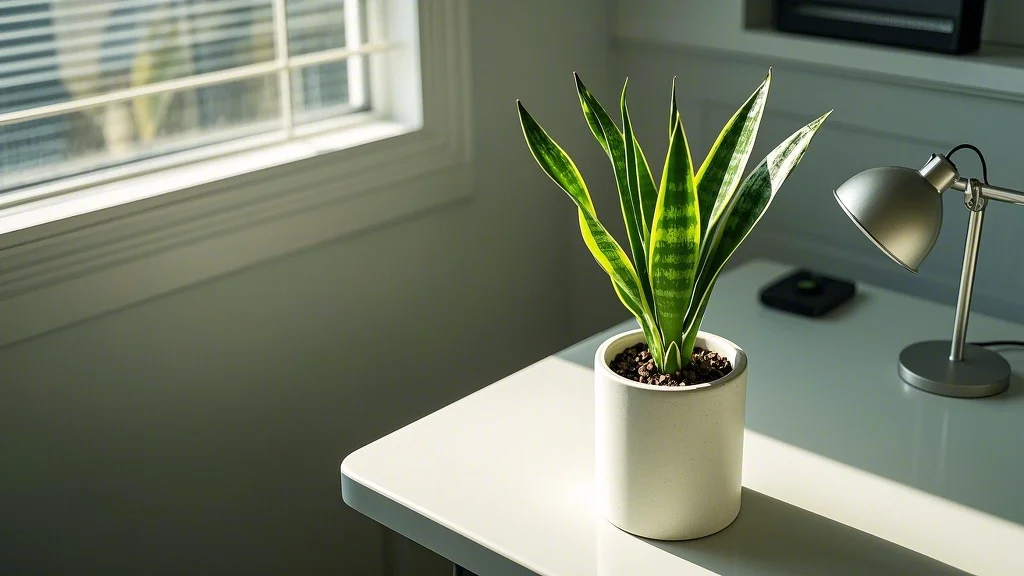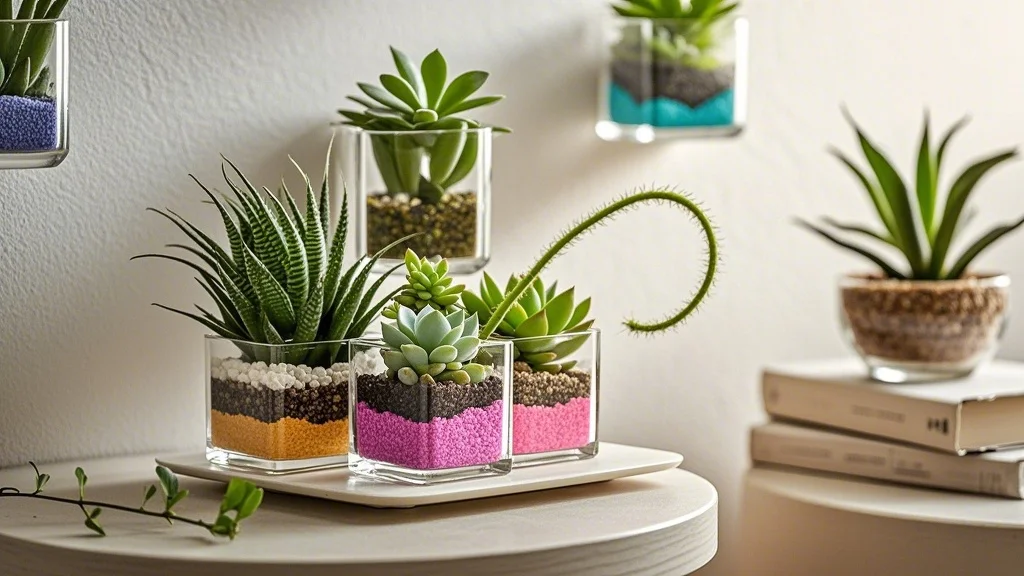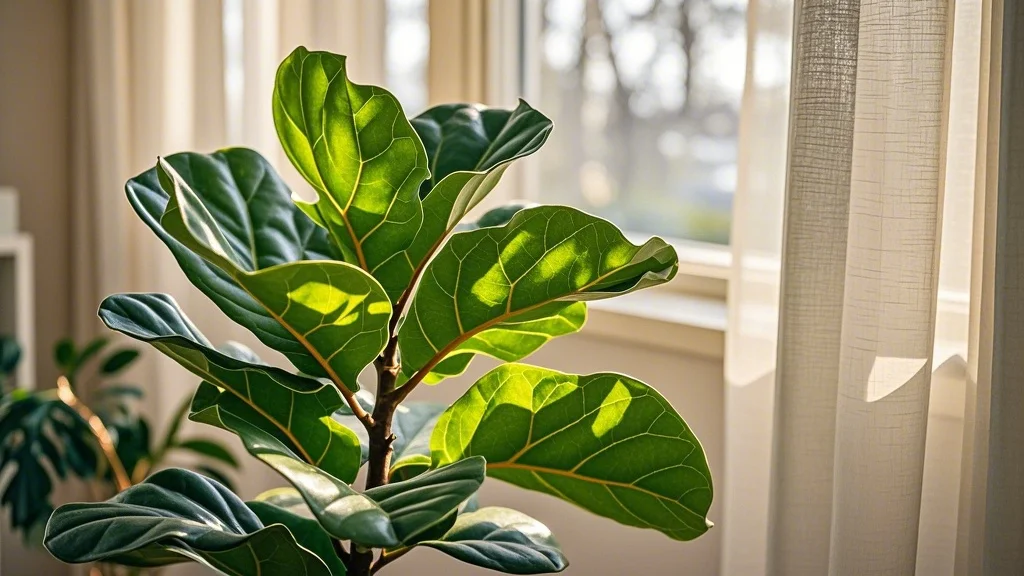The Snake Plant, scientifically known as Sansevieria trifasciata and recently reclassified as Dracaena trifasciata, stands as a monument to resilience in the plant world. Often called Mother-in-Law’s Tongue due to its sharp, pointed leaves, this striking houseplant has earned a reputation as virtually indestructible. For busy professionals and office workers with hectic schedules, the Snake Plant offers a perfect introduction to indoor gardening without demanding constant attention.
Native to West Africa’s tropical regions, this architectural beauty has become a staple in homes and offices worldwide, not only for its striking appearance but also for its remarkable ability to thrive under neglect. With its tall, sword-like leaves featuring distinctive patterns of green and yellow, the Snake Plant brings a touch of sophistication to any space while requiring minimal care.
This comprehensive guide will walk you through everything you need to know about Snake Plant care, from basic maintenance to propagation techniques, ensuring your plant not only survives but thrives in your urban environment.
Contents
Why Choose a Snake Plant?
Before diving into care specifics, let’s explore why Snake Plants have become such popular houseplants, especially for busy urbanites:
Air Purification Champion
NASA’s Clean Air Study identified Snake Plants as exceptional air purifiers. They remove toxins like formaldehyde, benzene, xylene, and trichloroethylene from indoor air. Unlike most plants, Snake Plants continue oxygen production at night, making them ideal bedroom companions.
Unmatched Durability
Few houseplants match the Snake Plant’s ability to withstand neglect. Forgotten watering schedules, low light conditions, and temperature fluctuations rarely faze this resilient plant, making it perfect for busy professionals.
Architectural Appeal
With their strong vertical lines and structured growth pattern, Snake Plants add a modern, sculptural element to any space. Their compact nature makes them suitable for desks, shelves, and floor corners alike.
Stress Reduction
Like most houseplants, Snake Plants can reduce stress levels and increase productivity—perfect for home offices and workspaces where focus and calm are essential.
Snake Plant Varieties

While the classic Sansevieria trifasciata is most common, several striking varieties exist:
- Sansevieria trifasciata ‘Laurentii’ – The most recognized variety with yellow leaf margins
- Sansevieria trifasciata ‘Hahnii’ (Bird’s Nest) – A compact variety with rosette-forming leaves
- Sansevieria cylindrica (Cylindrical Snake Plant) – Features round, spike-like leaves
- Sansevieria ‘Moonshine’ – Displays silvery-green, almost pale blue leaves
- Sansevieria trifasciata ‘Twisted Sister’ – Has wavy, twisted leaves with yellow margins
- Sansevieria ‘Black Gold’ – Features dark green leaves with gold edges
Essential Snake Plant Care
Light Requirements
Ideal Conditions: Snake Plants adapt to various light conditions but thrive in indirect bright light. They can tolerate low light but grow slower in such conditions.
Office Setting: Place your Snake Plant near a window with filtered light. In offices with fluorescent lighting only, Snake Plants will survive but may show slower growth.
Light Rotation: Rotate your plant quarterly to ensure even growth, as Snake Plants tend to lean toward light sources.
Warning Signs: Pale leaves indicate too much sun, while extremely slow growth might signal insufficient light.
Watering Needs
The Golden Rule: When in doubt, underwater rather than overwater. Snake Plants store water in their leaves and are more susceptible to root rot than drought damage.
Watering Schedule:
- Summer: Water every 2-3 weeks
- Winter: Water every 4-6 weeks
- Key Indicator: Always let the soil dry completely between waterings
Watering Technique: Water thoroughly at the soil level, avoiding pouring water into the center of the rosette, which can cause rot.
For Busy Professionals: Before business trips, give your Snake Plant a thorough watering. It can easily survive 3-4 weeks without additional water.
Soil and Potting
Ideal Soil Mix: Snake Plants require well-draining soil. Use a cactus or succulent mix, or create your own by combining:
- 2 parts regular potting soil
- 1 part coarse sand or perlite
- 1 part fine gravel or pumice
Pot Selection: Choose pots with drainage holes. Terracotta pots work particularly well as they absorb excess moisture.
Pot Size: Snake Plants prefer being slightly root-bound, so select containers only 1-2 inches larger than the root ball when repotting.
Repotting Frequency: Every 2-3 years or when roots begin growing through drainage holes.
Temperature and Humidity
Temperature Range: Snake Plants thrive in temperatures between 65-85°F (18-29°C), making them perfect for office and home environments.
Minimum Temperature: Keep above 50°F (10°C) to prevent cold damage.
Humidity Requirements: Unlike many tropical plants, Snake Plants don’t require high humidity, thriving in the dry conditions typical of air-conditioned offices.
Seasonal Considerations: Keep away from drafty windows in winter and air conditioning vents in summer.
Fertilizing Requirements
Frequency: Snake Plants are light feeders. Apply a balanced, water-soluble fertilizer (10-10-10) diluted to half strength once every 2-3 months during spring and summer.
Winter Care: No fertilization needed during fall and winter when growth naturally slows.
Warning: Over-fertilizing causes more harm than under-fertilizing, resulting in brown leaf tips and salt buildup.
Common Snake Plant Problems and Solutions
Pest Issues
Snake Plants rarely attract pests, but occasionally face:
Mealybugs:
- Signs: White, cotton-like clusters on leaves
- Solution: Remove with alcohol-dipped cotton swabs or spray with insecticidal soap
Spider Mites:
- Signs: Fine webbing between leaves, tiny moving dots
- Solution: Increase humidity, spray leaves with water, apply neem oil
Scale Insects:
- Signs: Brown bumps on leaves
- Solution: Scrape off gently with a soft toothbrush, treat with horticultural oil
Disease Concerns
Root Rot:
- Signs: Soft, mushy leaves, foul smell from soil
- Solution: Remove affected parts, repot in fresh, dry soil, reduce watering
Leaf Spot:
- Signs: Brown or yellow spots on leaves
- Solution: Improve air circulation, avoid overhead watering, remove affected leaves
Cosmetic Issues
Brown Leaf Tips:
- Causes: Over-fertilization, fluoride in tap water, low humidity
- Solution: Use filtered water, reduce fertilizer, move away from heating vents
Leaning or Falling Over:
- Causes: Uneven light exposure, top-heavy growth
- Solution: Rotate regularly, provide support if necessary, ensure proper light
Yellow Leaves:
- Causes: Overwatering (most common), aging (normal for outer leaves)
- Solution: Adjust watering schedule, remove only completely yellow leaves
Propagation Techniques
Snake Plants are remarkably easy to propagate, offering a rewarding way to expand your collection or share with colleagues.
Leaf Cutting Propagation
- Select a Healthy Leaf: Choose a mature, unblemished leaf
- Cut the Leaf: Using clean scissors, cut a 3-6 inch section
- Curing: Allow the cut end to callus for 1-2 days
- Planting Options:
- Water Propagation: Place cut end in water, changing weekly until roots form (1-2 months)
- Soil Propagation: Insert cut end about 1 inch into well-draining soil
- Patience Required: Roots develop in 3-5 weeks, but new growth may take several months
- Maintenance: Keep soil barely moist until established
Pro Tip: For variegated varieties, division propagation is preferable as leaf cuttings often revert to solid green.
Division Propagation
- Remove from Pot: Gently extract the entire plant
- Separate Rhizomes: Identify natural divisions in the rhizome (underground stem)
- Clean Cut: Use a sharp, sterilized knife to separate sections, ensuring each has roots attached
- Repot Sections: Plant divisions in appropriate containers with fresh soil
- Aftercare: Water lightly and place in indirect light until established
Styling with Snake Plants

Interior Design Applications
Modern Minimalist: Snake Plants’ architectural form complements clean lines and minimalist décor. Place in simple, geometric planters for maximum impact.
Biophilic Office Design: Create natural dividers between workspaces using taller Snake Plant varieties.
Small Space Solutions: The upright growth habit makes Snake Plants perfect for tight corners and narrow spaces.
Desktop Accents: Smaller varieties like ‘Hahnii’ make perfect desk companions without occupying valuable workspace.
Container Selection
Material Impact:
- Terracotta: Offers excellent drainage and a natural aesthetic
- Ceramic: Provides weight stability for taller specimens
- Metal: Creates industrial contrast with the plant’s organic form
- Concrete: Complements modern office environments
Size Considerations: Choose containers proportional to plant height—generally, pots should be about 1/3 the height of the plant for visual balance.
Drainage: Always prioritize drainage holes, using saucers to protect surfaces.
Advanced Care Tips for Busy Professionals
Vacation Care
Extended Absence Protocol:
- Water thoroughly before departure
- Move away from direct sunlight
- For absences exceeding one month, consider self-watering devices or asking a colleague to check once
Seasonal Adjustments
Winter Care: Reduce watering by 50%, eliminate fertilizer, maintain temperature above 50°F (10°C)
Summer Growth Period: Increase light exposure if possible, maintain regular watering schedule, apply diluted fertilizer
Office Environment Considerations
Air Conditioning Effects: Monitor soil moisture more carefully in air-conditioned environments which accelerate drying
Fluorescent Lighting: Supplement with occasional exposure to natural light if possible, or consider grow lights for offices without windows
Relocation Strategy: When moving offices, allow your Snake Plant to adjust gradually to new light conditions
Health Benefits Beyond Air Purification
Wellness Advantages
Improved Focus: Studies suggest that office plants like Snake Plants can improve concentration and productivity by up to 15%
Reduced Stress: Interaction with indoor plants has been shown to lower cortisol levels and blood pressure
Enhanced Recovery: Research indicates that viewing plants can accelerate healing and reduce fatigue
Feng Shui Applications
In Feng Shui practice, Snake Plants are believed to:
- Protect against negative chi (energy)
- Act as protective shields when placed near windows or entrances
- Promote personal growth and stability
- Enhance air quality both physically and energetically
Frequently Asked Questions
Q: Can Snake Plants survive in bathrooms with no windows?
A: Yes, Snake Plants can tolerate low light bathrooms, though growth will be slower. The humidity is actually beneficial, but ensure good ventilation to prevent fungal issues.
Q: My Snake Plant hasn’t grown in months. Is something wrong?
A: Snake Plants are naturally slow growers, especially in lower light. If the plant appears healthy otherwise, patience is key. Growth accelerates during spring and summer months.
Q: Can I place my Snake Plant in direct sunlight?
A: While they can tolerate some direct sun, prolonged exposure to intense direct sunlight can scorch leaves. Morning sun or filtered light through a sheer curtain is ideal.
Q: How toxic are Snake Plants to pets?
A: Snake Plants contain saponins which are mildly toxic to cats and dogs. Symptoms of ingestion include nausea, vomiting, and diarrhea. Keep plants out of reach of curious pets.
Q: Why are my Snake Plant’s leaves falling over?
A: Falling leaves usually indicate overwatering, insufficient light, or the plant becoming too top-heavy. Check soil moisture first, then consider repotting or providing more light.
Conclusion
The Snake Plant stands as the perfect houseplant for busy professionals and office workers seeking to incorporate greenery into their lives without committing to high-maintenance care routines. Its striking appearance, air-purifying capabilities, and remarkable resilience make it an ideal companion for even the most hectic lifestyles.
By following the straightforward care guidelines outlined in this guide, you’ll ensure your Snake Plant not only survives but thrives, potentially becoming a lifelong companion that grows alongside your career. From brightening sterile office environments to creating a more peaceful home atmosphere, the Snake Plant offers substantial benefits with minimal demands.
Remember that the key to Snake Plant success lies in restraint—less water, less fussing, and more appreciation for this extraordinary plant’s self-sufficient nature. In our fast-paced urban lives, the Snake Plant reminds us that sometimes the strongest things are those that require the least attention.
Whether you’re a complete beginner or looking to expand your indoor garden, the Snake Plant offers an accessible entry point to the rewarding world of houseplants, proving that even the busiest among us can enjoy the benefits of living with plants. Ready to add more low-maintenance plants to your collection? Explore our guides to ZZ Plants, Pothos, and other office-friendly houseplants at OwnGardens.com.








